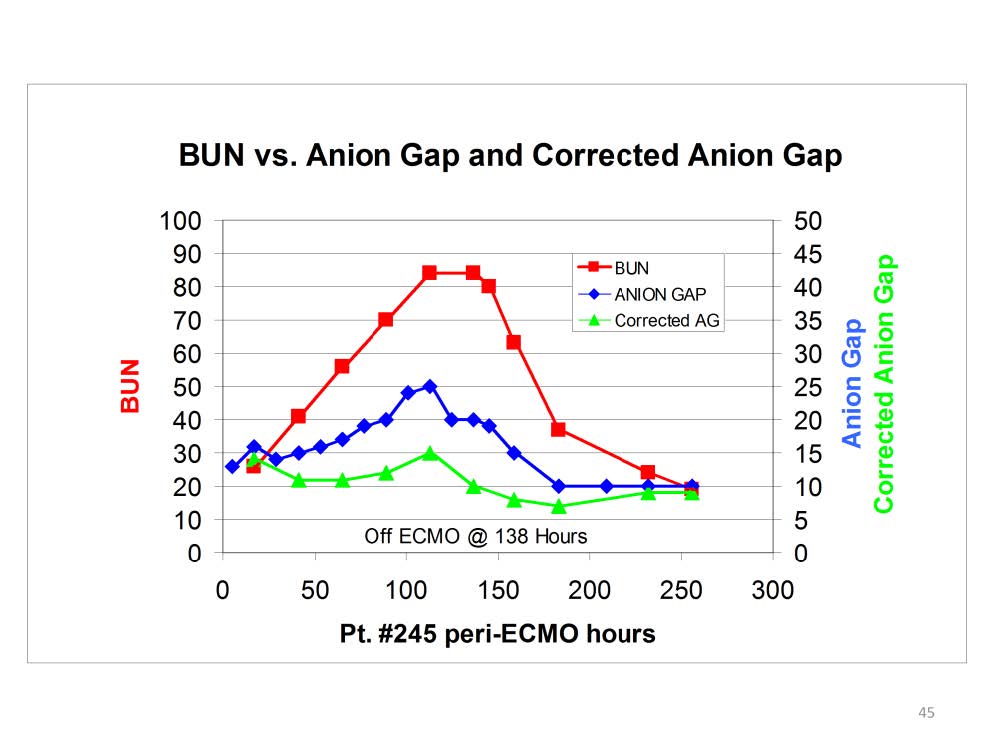
Example of an ECMO patient whose renal failure caused a BUN increase. The anion gap increased correspondingly into a lethal range. The application of the BUN correction factor reveals much lower and safer anion gap values.
During renal failure organic acids normally cleared by the kidneys are retained in the blood. These acids do not reflect a life threatening alteration in the intracellular milieu the way that lactic acid does. However they do increase the AG. The quantity of these retained ‘renal acids’ is roughly proportional to the increase in the blood urea nitrogen (BUN). This is an example of an ECMO patient whose renal failure caused the BUN to increase to 85 mg/dl. At the same time, the AG also peaked at the seemingly near lethal level of 25 mEq/L. However applying the BUN correction factor lowered the AG to only 15 mEq/L, much less indicative of a lethal intracellular pH change.
To apply the BUN correction factor, for every 7 mg/dl that the BUN goes above 15 the AG should be reduced by 1 mEq/L. However once the BUN exceeds 71 mg/dl, the correction factor becomes unreliable and no further AG correction should be made.

Perfusion Theory is an educational platform for the Oxygen Pressure Field Theory (OPFT). August Krogh’s theoretical concept of the oxygen pressure field is explained and then applied to clinical applications in perfusion practice.